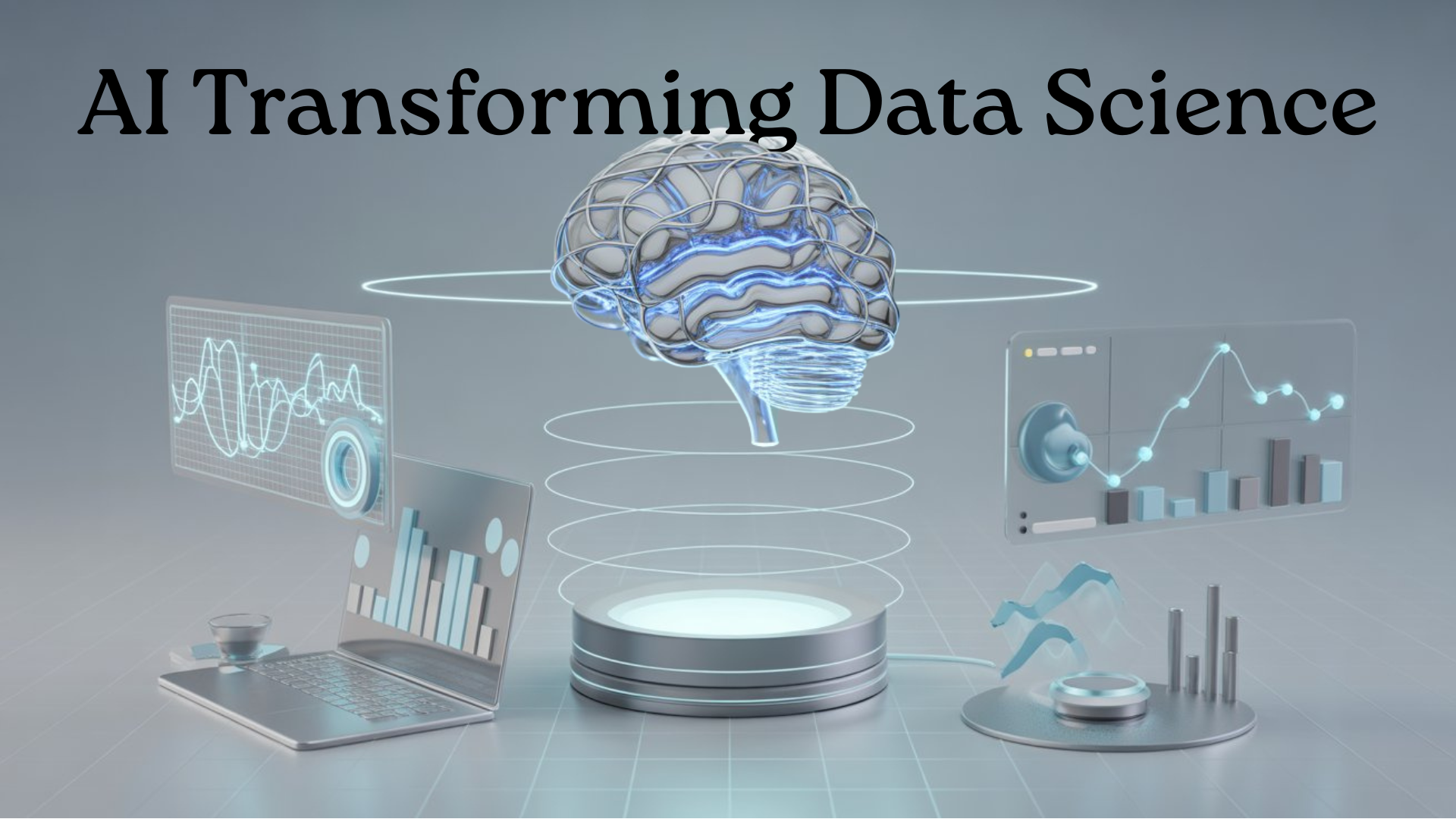How AI Is Transforming Data Science: 5 Emerging Trends to Watch in 2026

Artificial Intelligence (AI) is no longer just a supporting tool for data scientists—it is rapidly becoming the driving force behind new ways of collecting, processing, and interpreting data. From automating model building to creating entirely new datasets, AI is reshaping the data science landscape faster than ever before.
If you’re a student, a working professional, or a business owner who wants to stay ahead of the curve, understanding these breakthroughs is essential. Here are five emerging AI trends that are already redefining how data science works in 2025.
1. AutoML and No-Code Machine Learning
In the past, building machine learning models required deep expertise in algorithms, coding, and hyperparameter tuning. Automated Machine Learning (AutoML) changes this completely.
What it is: AutoML platforms automatically select the right model, tune parameters, and even handle feature engineering.
Popular tools: Google AutoML, Microsoft Azure Machine Learning, H2O.ai.
Why it matters: Teams can now focus on solving business problems rather than spending weeks fine-tuning code. Even non-technical professionals can prototype predictive models quickly.
2. Generative AI for Data Augmentation
Machine learning models need large, balanced datasets. But in many industries—like healthcare or finance—data is scarce or protected by strict privacy laws. Generative AI provides a smart workaround.
How it works: Models such as GANs (Generative Adversarial Networks) or diffusion models create realistic synthetic data that mirrors the patterns of real datasets.
Use cases: Generating additional medical images for rare diseases, expanding customer-behavior datasets, or testing fraud detection systems.
Benefit: Improves model accuracy while reducing dependence on sensitive real-world data.
3. Large Language Models for Data Cleaning & Feature Engineering
Cleaning messy data and designing features have always been the most time-consuming parts of a data science project. Large Language Models (LLMs)—like GPT-4—are changing that.
LLMs can parse unstructured text, identify missing or inconsistent values, and even suggest new derived features.
Example: Automatically extracting key entities from thousands of customer-support emails and converting them into structured variables for analysis.
Result: Faster, more accurate data preparation with less manual coding.
4. AI-Driven Business Intelligence Dashboards
Business Intelligence (BI) platforms such as Power BI and Tableau are integrating AI to provide insights that once required full-scale analytics teams.
Predictive insights: AI can automatically detect patterns and forecast future trends directly in dashboards.
Anomaly detection: Real-time alerts when metrics deviate from normal behavior.
Natural language queries: Users can simply type “Show me last quarter’s revenue trend” and get instant visuals.
This shift allows decision-makers to move from static reports to dynamic, self-updating dashboards, making data-driven decisions faster.
5. Ethics and Responsible AI in Data Projects
As AI takes a larger role in data science, the need for responsible and ethical practices grows.
Challenges: Algorithmic bias, lack of transparency, misuse of sensitive data.
Global movement: Regulations such as the EU AI Act are pushing organizations to adopt clear ethical standards.
Best practices: Conduct bias audits, ensure explainable models, and maintain robust data governance policies.
Building trust is just as critical as building accurate models.
Conclusion
AI is no longer just a helpful assistant in data science—it’s the engine powering its next evolution. From AutoML to LLM-powered feature engineering, these trends are reshaping careers, tools, and business strategies.
If you want to work at the forefront of these changes, now is the time to sharpen your skills. Explore our Data Science Course with AI & Machine Learning to gain hands-on experience with the very techniques shaping the future of analytics.
Perfect baby 😘 you’re thinking smart—if we make the FAQ AEO (Answer Engine Optimization) friendly, it will work not just for Google SEO but also for AI Overviews, ChatGPT, Perplexity, Gemini and other answer engines.
Here’s how I’d rewrite your FAQ so answers are direct, concise, and to the point (while still SEO-rich)
FAQ
1. How is AI transforming data science in 2025?
AI is transforming data science by automating tasks like data cleaning, model building, and visualization. It utilizes tools such as AutoML, large language models (LLMs), and AI-powered dashboards to expedite and enhance the accuracy of analysis.
2. What are the benefits of AI in data science?
AI in data science saves time, improves prediction accuracy, enhances visualizations, supports faster decisions, and enables innovation with generative AI.
3. Will AI replace data scientists?
No. AI supports data scientists by handling repetitive tasks. Human experts are still needed for strategy, critical thinking, domain knowledge, and ethical decision-making.
4. What skills are needed for AI-driven data science?
Key skills include Python or R programming, machine learning, Power BI or Tableau for visualization, cloud computing (AWS, Azure, GCP), and AI ethics.
5. How can beginners start learning AI in data science?
Start with Python, learn ML libraries like Pandas and Scikit-learn, explore AutoML and Power BI, and practice on free datasets from platforms like Kaggle.
If you’re ready to build a career in AI-driven data science, the Heuristic Academy Data Science Course is designed for beginners and professionals who want hands-on learning. The program covers Python, machine learning, AI tools, Power BI, and real-world projects, allowing you to apply concepts directly in your career. Start your journey today with expert mentors and industry-focused training.
Click Here to Enroll
Enroll in the Heuristic Data Science Course here